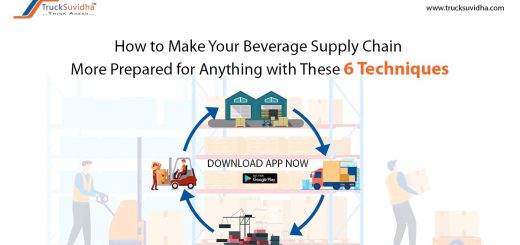Future of Logistics being shaped by Intermodal Transportation
The e-commerce sector is becoming extremely global. According to 2023 expert research, 57% of internet consumers reported doing so worldwide. Trust in online purchases from foreign nations has grown in many places as a result of factors such as more secure payment methods, improved monitoring technologies, and highly sophisticated global transportation networks. However, just because it is now feasible to sell to foreign enterprises more quickly and cheaply than in the past does not imply that it is easy for most e-commerce organizations. Running efficient logistics over large distances is costly and requires careful planning. You must determine which forms of transportation to employ at which places for maximum efficiency and backups in case the option you’ve picked fails. Many businesses use intermodal transportation to boost efficiency when shipping across vast distances. Intermodal shipping uses two or more modes of transportation, such as truckload, rail, and ship.
While coordinating rail, truck, ship, and plane transport for a single shipment may make your head spin, mastering intermodal shipping can help you reduce costs, increase agility, engage in environmentally responsible shipping, and provide you with the tools you need to expand your e-commerce business to new markets.

When is it appropriate to employ intermodal?
While diversifying the types of transportation you utilize for shipping has several advantages, you must still examine whether it makes sense.
Here are some reasons why intermodal is the best option for your shipment.
When it’s a long distance:
Intermodal transportation is often the most efficient mode of travel for 400 miles or more. If you need to carry your goods over land for a short distance, truckload may be your best option.
When shipping high-value items:
While it may appear safer to put your products in the hands of a single driver for the duration of the voyage, the trucker will have to take breaks and leave your items unsupervised at some time during the long travel. When travelling by rail, steady speed and distance are essential considerations.
When the load isn’t too heavy:
Weight constraints for intermodal are lower than for truckload, with a maximum weight of roughly 2,500 pounds depending on the location. Check your local weight limitations for rail freight before shipping your merchandise using this method; otherwise, you may face a penalty. If your shipment exceeds the rail weight restriction, you may be obliged to send it by another method.
Why choose intermodal transportation?
Intermodal may appear complicated, but it may be a much safer, quicker, and more environmentally responsible shipping method with the correct strategy.
Cost savings
When transporting over vast distances, combining several forms of transportation is the most cost-effective option. Shippers may save between 10% and 40% by switching from truckload to intermodal rail freight.
Adaptability under changing circumstances
Demand for any e-commerce firm fluctuates throughout the year due to holidays, season changes, and market circumstances. Given the enormous changes in demand over the past few years, flexibility should be a primary factor when determining which delivery methods to utilize.
You may modify the mode of transportation you utilize based on the volumes you need to ship as demand changes. For example, when your volume grows, you may use decreased rail rates to send your items farther while spending less.
Sustainability
A railway can transport one ton of freight around 500 miles on one gallon of gasoline, but a truck would require roughly 70 gallons of fuel to travel the same distance. Replacing a portion of your shipping voyage with rail transport may significantly minimize your carbon impact.
Also Read: Benefits of Blockchain Technology in Supply Chain
Conclusion
Companies are just some of the ones seeing the benefits of multimodal transportation. Governments all across the globe know the necessity of having a speedier and more sustainable mode of cargo transportation. Many Asian Pacific countries constantly extend their rail networks, making intermodal transit even more efficient. Intermodal transportation has taken almost two centuries to transition from an inconvenient fad to a logistical staple, but it is finally here to stay. Intermodal freight transport’s increased efficiency and robustness have pushed it to the forefront of logistics managers’ minds, and firms are capitalizing on these benefits to accelerate post-pandemic recovery.




Recent Comments